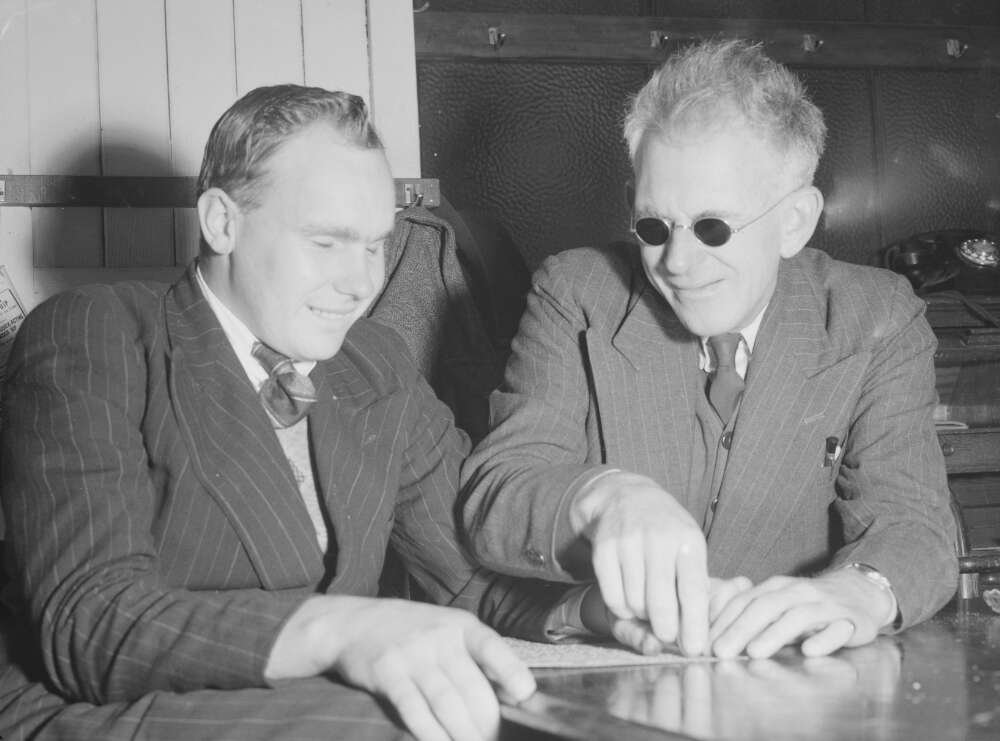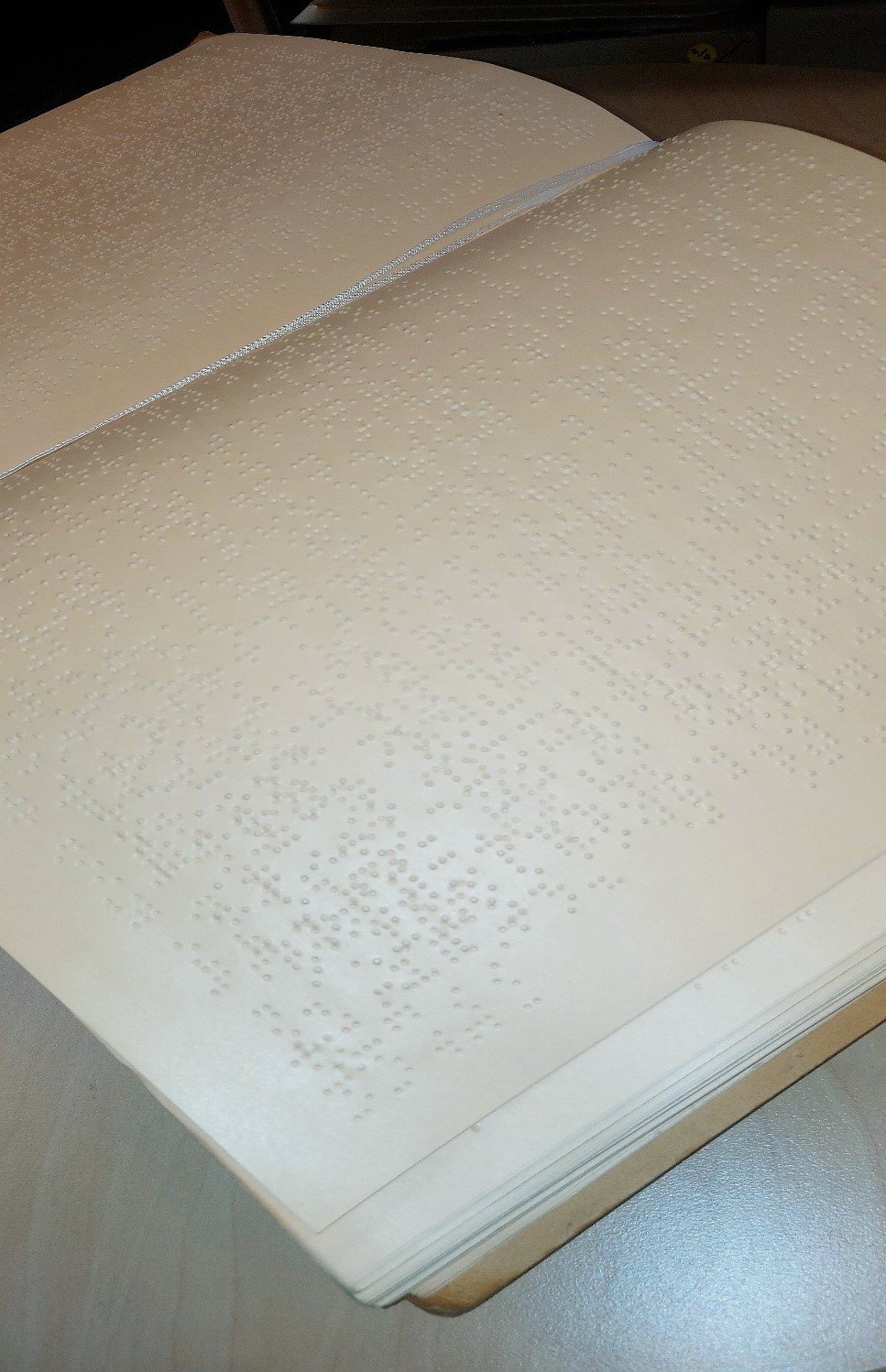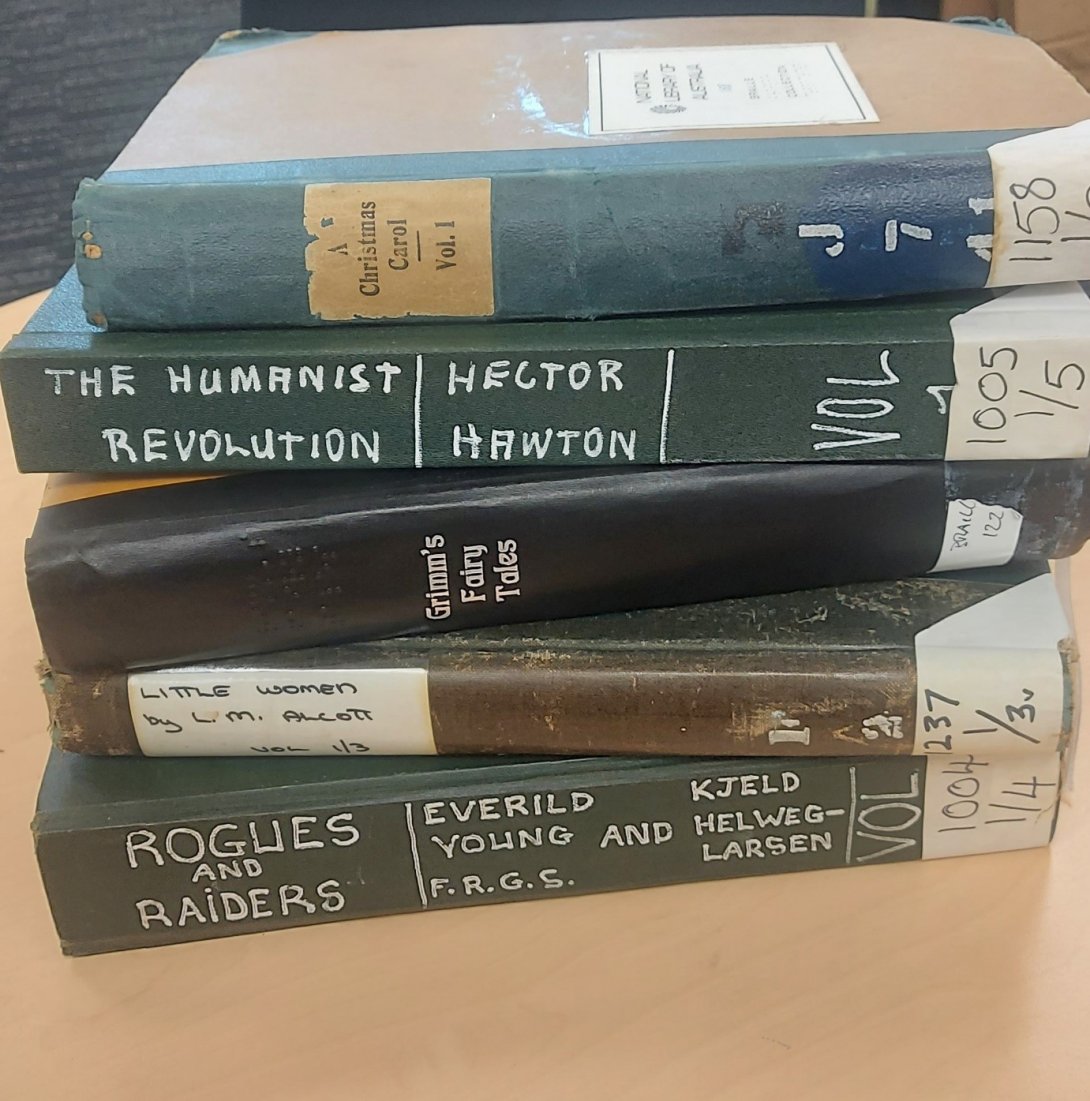In my work as a reference librarian, I am forever learning new things about the Library’s collections. Recently, I came across a large collection I didn’t know we held, the National Braille Collection. I had never seen anyone request this material before, so I was very excited to explore the collection and share it with you all.
In the early 1800s, a man called Louis Braille developed a system of reading for the vision impaired. Braille was vision impaired himself and his system, named after its founder, uses a tactile method of reading, with a series of raised dots on a page that can be felt with the fingertips.

Braille uses a matrix of three rows and two columns of embossed dots which can represent letters, numbers, punctuation and sometimes whole words. Similar to the Latin alphabet, braille can be used to communicate in various languages. The English version of braille is called Unified English Braille and is used throughout English-speaking countries.

The United Nations declared the 4th of January World Braille Day in honour of Louis Braille’s birth in 1809. Australia celebrates January as Braille Literacy Month.
The Library’s collection of works in braille is enormous. A bibliography of braille books the Library holds was compiled in 2007. It is over 350 pages long. The collection includes a selection of modern works, classics and some too old to date.

Anyone with a National Library digital login can request to view these items in the reading rooms. If you haven't already, register online to join the Library.
There are two ways to find works translated into braille via the Library’s Catalogue. You can either search the full list of items in braille by using the keyword ‘braille’ and limiting your results to ‘call number’. Or, you can look for particular subjects or titles by using keywords and the Boolean search feature ‘AND’, for example ‘braille AND gardening’ or ‘braille AND Dracula’.
It may be useful to note that works in braille require more pages to relay the content than traditionally printed works. This means that many books are broken up into multiple volumes. So don’t be surprised if you order a single novel and receive a pile of books!
The National Braille Reserve Collection is held at one of our offsite storage facilities, so it is advisable to check with the Reading Room staff about how to best request and use the Collection. Generally, you should make your request a day or two before you plan to visit the Library. If you plan to view books in braille on the weekend, make your request on the Thursday prior.
The National Library was previously involved in coordinating a National Union catalogue of materials for people with disabilities, which we hold on microfilm. We also hold a number of books in large print.
To find out more about how we are assisting patrons with disabilities, see information about building accessibility and information about website accessibility. You can read more about how we are using the navigational app, BindiMaps, to assist those with vison impairment in our story about how The National Library is Bindimapped.